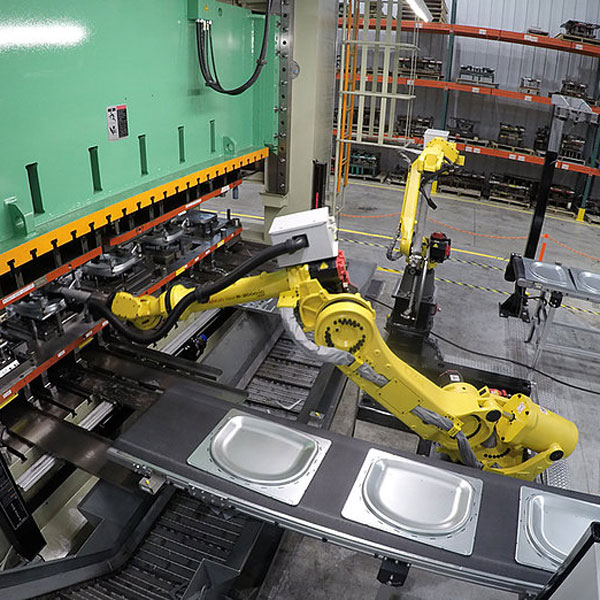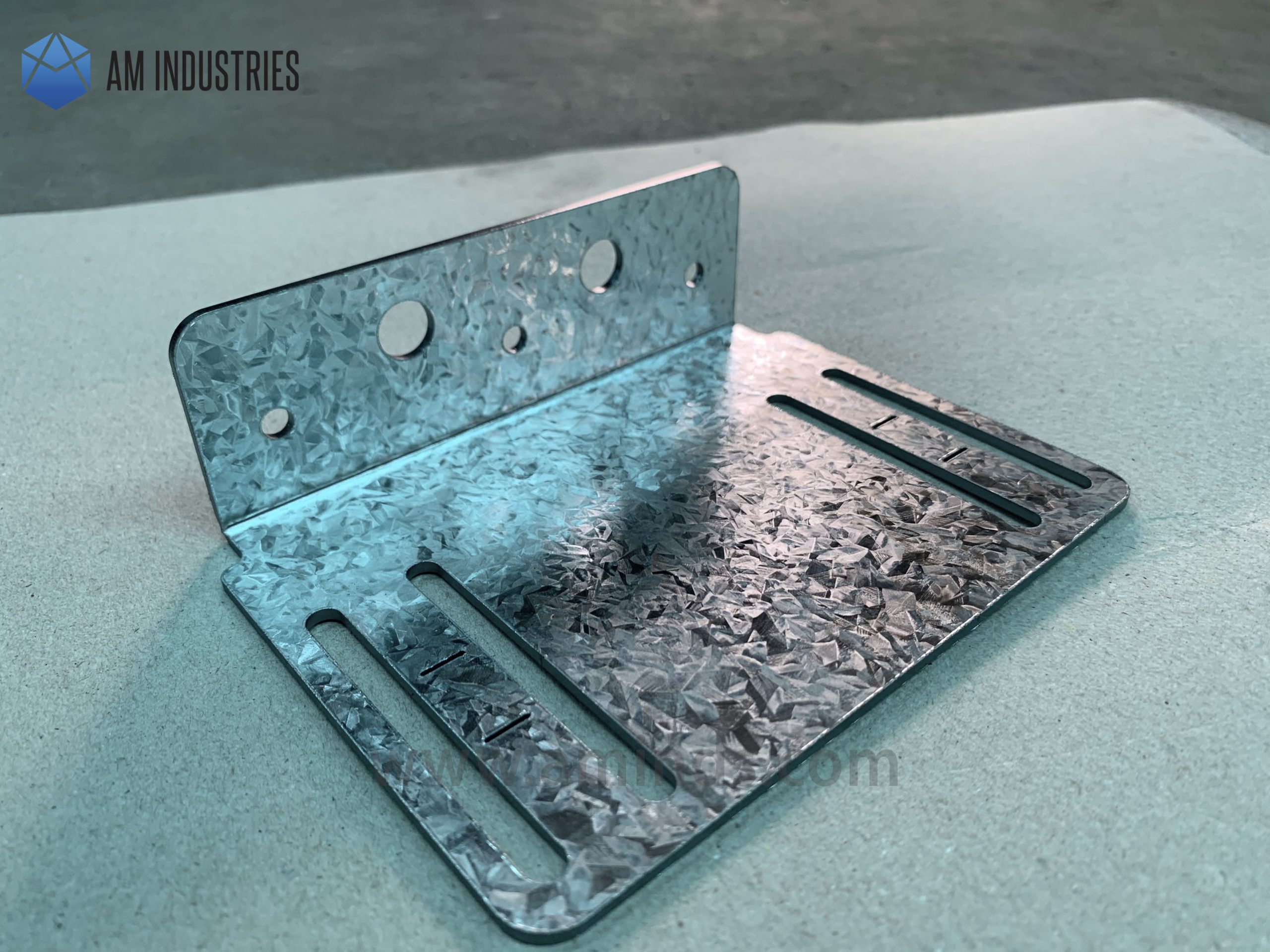Exploring the Function of Metal Stamping in Modern Engineering Solutions
Exploring the Function of Metal Stamping in Modern Engineering Solutions
Blog Article
Releasing the Prospective of Metal Stamping: Expert Tips and Best Practices Disclosed
In the realm of steel marking, where precision and performance preponderate, the mission to enhance processes and unlock covert potentials is a perpetual search. Competence sharpened over years of industry experience, incorporated with sophisticated innovations and innovative methods, holds the essential to accomplishing exceptional results. As we navigate via the elaborate world of metal stamping, a better look at the details of tooling layout, material option, production performance, quality assurance, and arising trends guarantees a treasure of insights waiting to be discovered. Keep tuned to find how these specialist suggestions and best methods can transform the steel stamping landscape.
Tooling Style Optimization
Optimizing tooling style is crucial for boosting efficiency and accuracy in steel stamping procedures. A well-balanced tooling design can substantially impact the top quality and cost-effectiveness of metal marking operations. By thoroughly thinking about aspects such as material choice, die arrangement, and component geometry, suppliers can enhance production processes and boost overall item quality.
One trick element of tooling style optimization is picking the most appropriate materials for the punches and passes away used in the stamping procedure. Appropriate die style can aid stop issues such as wrinkling, tearing, and too much springback, leading to greater production yields and minimized scrap rates.
In addition, maximizing part geometry via tooling layout can help reduce product waste and manufacturing time. By meticulously forming punches and passes away to match the preferred part requirements, suppliers can attain tighter tolerances and enhanced part quality. Generally, spending time and sources in enhancing tooling layout can cause significant long-lasting advantages for metal marking procedures.

Product Option Techniques
Purposefully picking materials for metal marking tooling is paramount for ensuring longevity and efficiency in manufacturing procedures. When choosing products for steel stamping applications, several essential variables have to be thought about. The very first factor to consider is the kind of material being stamped. Various materials, such as light weight aluminum, stainless-steel, or copper, require specific tooling materials to guarantee optimum efficiency and durability.
Another crucial element in material option is the predicted production volume - Metal Stamping. For high-volume manufacturing runs, tooling products with remarkable wear resistance and toughness, such as device steels or carbide, are typically preferred to stand up to the roughness of constant stamping operations
Furthermore, the complexity of the stamping style and the required precision likewise play a substantial role in material option. For elaborate marking patterns or tight resistances, materials with high thermal conductivity and superb machinability, like beryllium copper or tool steel alloys, might be preferable to accomplish the preferred results.
Production Performance Methods
To enhance producing output and reduce manufacturing expenses, applying reliable techniques in metal marking processes is critical. Automated metal stamping devices can do tasks with accuracy, consistency, and at a much faster price than hand-operated labor, leading to boosted productivity and reduced cycle times.
One more method to enhance production efficiency is via continual process renovation. Performing regular audits and efficiency assessments can help identify traffic jams, inadequacies, and areas for improvement within the metal marking procedure. By evaluating information and feedback from these examinations, manufacturers can apply targeted services to streamline operations, increase throughput, and make best use of overall performance.
Moreover, embracing lean production principles, such as five approach and Kanban systems, can aid get rid of waste, improve operations, and enhance total productivity in metal marking operations. By promoting a society of constant improvement and empowering staff members to add concepts for efficiency gains, producers can open the complete possibility of their metal marking procedures.
High Quality Control Measures
Structure on the foundation of efficient manufacturing methods in metal marking procedures, ensuring rigorous quality control steps is important for maintaining product requirements and consumer contentment. Quality assurance in metal marking entails go methodical assessment, testing, and surveillance of the production processes to determine and correct any type of discrepancies or issues that might jeopardize the end product's integrity (Metal Stamping). Applying procedures such as regular devices upkeep, in-process examinations, and thorough screening of completed parts can help identify issues at an early stage and protect against expensive rework or product recalls
Along with positive top quality control steps, it is vital to develop clear quality criteria and requirements that straighten with customer demands. Routine audits and testimonials of quality processes can aid identify areas for enhancement and guarantee consistency in product top quality. By cultivating a culture of top quality consciousness among workers and giving adequate training on top quality control treatments, producers can boost general item integrity and brand name track record. Ultimately, buying robust high quality control determines not just safeguards against issues and non-conformities yet additionally leads the way for sustained business growth and consumer commitment.

Cutting-edge Metal Stamping Technologies
Improvements in steel marking modern technologies have transformed the manufacturing industry, improving efficiency and precision in the production process. Servo presses offer unrivaled control over the stamping procedure, allowing for changes in pressure, dwell, and rate time with extraordinary precision.

Additionally, the Get More Info adoption of additive production techniques in metal marking, such as 3D printing of die parts, has structured the tooling style and production procedure. This method permits greater design adaptability, fast prototyping, and cost financial savings in tooling manufacturing. By leveraging these innovative modern technologies, suppliers can unlock new degrees of efficiency, high quality, and competitiveness in the metal stamping market.
Conclusion
In verdict, the optimization of tooling layout, strategic material read this post here option, reliable production methods, quality control actions, and innovative modern technologies are essential for releasing the full possibility of steel marking. By executing these best methods and expert pointers, producers can improve efficiency, raise quality, and remain competitive in the steel stamping market. It is crucial for business to constantly review and enhance their procedures to accomplish success in this field.
As we navigate via the complex world of steel marking, a more detailed look at the complexities of tooling design, product option, manufacturing effectiveness, top quality control, and emerging trends assures a treasure trove of insights waiting to be unearthed. A well-balanced tooling design can considerably affect the quality and cost-effectiveness of metal stamping operations.Structure on the foundation of reliable production techniques in metal stamping procedures, guaranteeing stringent high quality control steps is necessary for maintaining product criteria and customer satisfaction. Quality control in metal marking includes methodical inspection, screening, and monitoring of the production refines to recognize and fix any discrepancies or flaws that could jeopardize the final item's integrity.In final thought, the optimization of tooling design, strategic material option, reliable production techniques, top quality control measures, and innovative technologies are necessary for letting loose the full potential of metal stamping.
Report this page